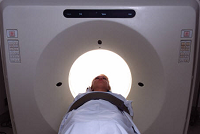The use of 3D reconstruction CT scans is common in radiology practices for various exams. Understanding when and how to document 3D recon CT is crucial for proper billing. In some cases it is a minimum requirement in order to bill for the exam that was intended, while in other cases it will garner extra reimbursement. Either way, it must be specifically documented in order for coders to properly bill for the procedures. In this article we will review the financial reasons for providing good documentation, identify when 3D reconstruction is required and when it is an additional charge, and finally understand the documentation requirements that will provide the maximum reimbursement in these various circumstances.
Learn the Proper Documentation for 3D Reconstruction to Maximize Radiology Practice Reimbursement on August 4, 2015
Categories: radiology documentation, CT imaging, 3D reconstruction, CT angiography
The American College of Radiology (ACR), Radiology Business Management Association (RBMA), and other similar provider advocacy organizations are busy analyzing and preparing responses to the Medicare Physician Fee Schedule (MPFS) Proposed Rule issued by the Centers for Medicare and Medicaid Services (CMS) recently. According to the RBMA Washington Insider of July 14th, “CMS estimates that if the provisions within the proposed rule are finalized, the overall impact of the MPFS proposed changes to radiology to be 0%, while interventional radiology would see an aggregate increase of 1%, radiation oncology a decrease of 3%, nuclear medicine a change of 0%, radiation therapy centers a decrease of 9%, and Independent Diagnostic Testing Facilities (IDTFs) a 1% increase.”
Categories: MPFS
Medicare Changes Position on IDTF Services for PQRS Participation on June 23, 2015
Participation in Medicare’s PQRS program is important to radiologists in order for them to maintain full reimbursement under the Medicare fee schedule, and to perhaps earn a higher level of payment in future years. Radiologists providing services in Independent Diagnostic Testing Facilities (IDTFs) will not be able to participate in PQRS, according to a ruling described in the June 16, 2015 issue of the RBMA Washington Insider. This most recent guideline issued by the Centers for Medicare and Medicaid Services (CMS) clarifies past guidance by stating, “After further review, CMS is announcing that EPs [eligible professionals] who provide services under an IDTF or an independent lab (IL) (and on behalf of services provided by that IDTF or IL) are not able to participate in PQRS. Therefore EPs who provide services [billed] under an IDTF or IL will not receive the 2015-2018 PQRS payment adjustments for services associated with the IDTF or IL”. This reverses CMS guidance issued as recently as March, 2015.
Categories: radiology reimbursement, medicare reimbursement, cms, PQRS
OIG Audit Highlights the Need for Precise Medicare Billing on June 17, 2015
A report issued by the Office of the Inspector General (OIG) on May 6, 2015 found that Medicare overpaid physicians approximately $33.4 million for services performed in facility locations that were incorrectly coded as performed in non-facility locations, such as ambulatory surgery centers and hospital outpatient departments. The physicians identified in the audit will have to reimburse Medicare for the overpayments.
Reimbursement rates for both Breast Ultrasound and Digital Breast Tomosynthesis (DBT) received a boost from the Centers for Medicare and Medicaid Services (CMS) this year. Medicare adopted new CPT1 coding that provides enhanced reimbursement for ultrasound services, and coverage was newly approved for DBT as an add-on to screening and diagnostic mammography examinations. These changes were described in our article, The Impact of Coding Changes on Radiology Practices in 2015. In order to fully realize the benefit of these new billing opportunities, proper documentation is required within radiology practices.
Categories: radiology documentation, medicare reimbursement, breast imaging
Avoid Medicare Payment Reductions by Upgrading CT Equipment on May 7, 2015
Buried in the 2014 legislation that delayed the Sustainable Growth Rate for a year was a provision that will penalize radiology groups that have not upgraded their CT equipment to the latest standards. As described in the April 28, 2015 edition of Radiology Business, “Beginning in January 2016, any exam acquired with a CT system that does not meet the XR-29- 2013 standard, also known as MITA Smart Dose, will be hit with a 5% penalty. In 2017, that penalty jumps to 15%. XR-29-2013 was published by the National Electrical Manufacturers Association’s Medical Imaging & Technology Alliance (MITA) in 2013, and is considered the industry standard for CT technology.”
Congress has enacted the “Medicare Access and CHIP Reauthorization Act of 2015” (MACRA), which makes sweeping changes to the Medicare payment system. Initially conceived to put an end to the perennial struggle with the Sustainable Growth Rate (SGR) methodology, MACRA replaces the SGR with a valuation system that will minimally increment Medicare fees in the near term but which will eventually tie physicians’ fees to the quality measures they report.
Categories: medicare reimbursement, PQRS, MIPS, VBM, MACRA
Conduct a Gap Analysis to Get Your Radiology Practice ICD-10 Ready on March 25, 2015
Will you have to be ready to use ICD-10 coding by October 1, 2015? The answer is: "perhaps". Current law says that this will be the earliest date for its implementation. CMS, the Centers for Medicare and Medicaid Services, has stated that there will be no further extensions. And, at the time of this writing, there is no indication that an ICD-10 extension will be included as part of legislation that would also extend the current Medicare fee schedule beyond its planned March 31st expiration, but this could change as negotiations continue in Washington this week.
As we have reported in a previous article, there are many good reasons to prepare for ICD-10 even if the Medicare program never requires it to be used! The key to readiness is to improve clinical documentation so that the coding and billing team can do the best job possible to maximize your practice reimbursement, and this approach will also help improve your billing immediately.
Categories: radiology reimbursement, radiology documentation, icd-10
Assessing the Future Impact of Medicare Regulations on Radiology and Radiation Oncology on March 6, 2015
The landscape of Medicare payment policy will be changing over the coming years as a result of actions taken in 2014 through the Medicare Physician Fee Schedule (MPFS) and the Protecting Access to Medicare Act (PAMA). The MPFS for 2015 contained fewer changes to current payment policy than it did proposals deferred for future consideration. The Protecting Access to Medicare Act of 2014 (PAMA) was initiated to avoid the significant Medicare payment reduction imposed by the Sustainable Growth Rate (SGR) provision in the Medicare law, but it also contained other provisions affecting payment under the Medicare program.
Categories: radiology reimbursement, radiation oncology reimbursement, MPFS, PAMA
What Radiologists Need to Know Before Billing for Lung Cancer Screening Using Low-Dose CT on March 4, 2015
The Centers for Medicare and Medicaid Services (CMS) announced that Medicare coverage for lung cancer screening using low-dose CT (LDCT) scans would become effective as of February 5, 2015. However, according to the American College of Radiology (ACR), we are likely a few months away from publication of the details needed before radiology practices can begin submitting claims to Medicare for these scans. They recommend that “physicians meeting the coverage criteria should hold all claims for low-dose CT lung cancer screening until further reimbursement instructions are released by CMS.” The article “College Addresses Lung Cancer Screening Questions” appeared in the February 13th edition of the ACR’s Advocacy in Action eNews.
Categories: radiology reimbursement, medicare reimbursement, low dose CT













